He Jian 何健—The Traveling Artist
“Der Reichtum des Reisenden Jian He ist seine Kunst”
“The wealth of the traveler Jian He is his art”
Dorothee von Windheim, Cologne, January 2012

I met He Jian while working at Faurschou Foundation in connection to a collaboration with the painter Liu Xiaodong. At the time, He Jian was an assistant at Liu Xiaodong’s studio. I had no idea that he was an artist in his own right until he gave me a catalog documenting his early work up until 2012, right after the young artist had graduated from the Kunsthochschule Kassel in Germany. In addition, I realized that I had actually spent a few days in Kassel during the Documenta while He Jian was still living and studying in Germany—not knowing that, someday, our paths would cross in Beijing many years later. It is these strange and wonderful coincidences that make encounters with artists all the more memorable.
With the beginning of the Year of the Tiger in 2022, two years into the pandemic, the world has changed a great deal. It has evolved into a place where, in some cases, there is more time for reflection—a world that involves less travel for most of us, creating a time in which we look back at our encounters with far-off places and people. It makes us wonder what effect these travels and relationships have had on our lives, now that these experiences are much less accessible. He Jian’s art is a direct result of this bygone age of effortless outward movement, and at the same time it is deeply concerned with the inner worlds of the human mind, conveyed through visions of semi-abstract paper landscape collages.
He Jian was born in 1980 in Beijing and studied Art Education at the College of Fine Arts of Capital Normal University, Beijing. He graduated with a degree in Fine Art from Kunsthochschule Kassel in 2011. During his time in Germany, He Jian not only learned the language but also familiarized himself with German culture and customs, which emerge in varying degrees in his work.
What makes He Jian’s perspective especially unique is his experience as a traveler both to a foreign country, Germany, and then back to his native country, China—a characteristic which He Jian’s former professor Dorothee von Windheim describes as an accumulation of wealth, not in monetary terms but in terms of experiencing transition and change. “Upon his return,” writes von Windheim, “he amassed a certain amount of wealth, completely independent from his wallet—The traveler He Jian’s wealth is his art.”
Early Work
He Jian’s early work consists of whimsical cartoon-like sketches that seem harmless, almost child-like at first glance. Upon closer inspection, however, they can have a dark and disturbing effect. Phantom images, ranging from skulls, and butterflies, and headless cartoon-like figures dominate the artist’s creations. The images appear ghost-like on thin paper resembling skin, cloth, and other organic materials.
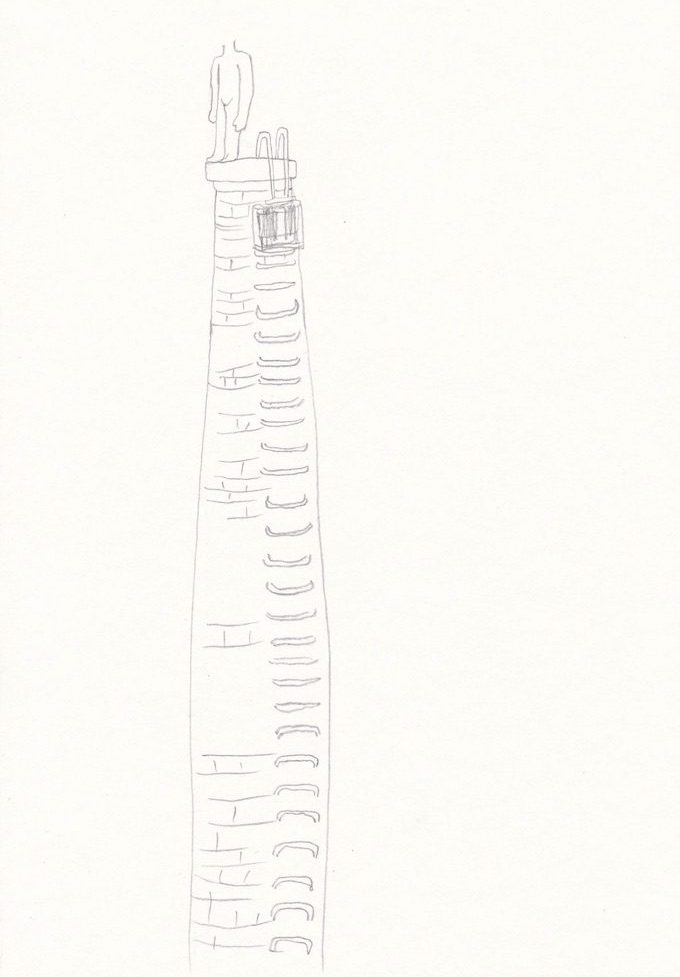
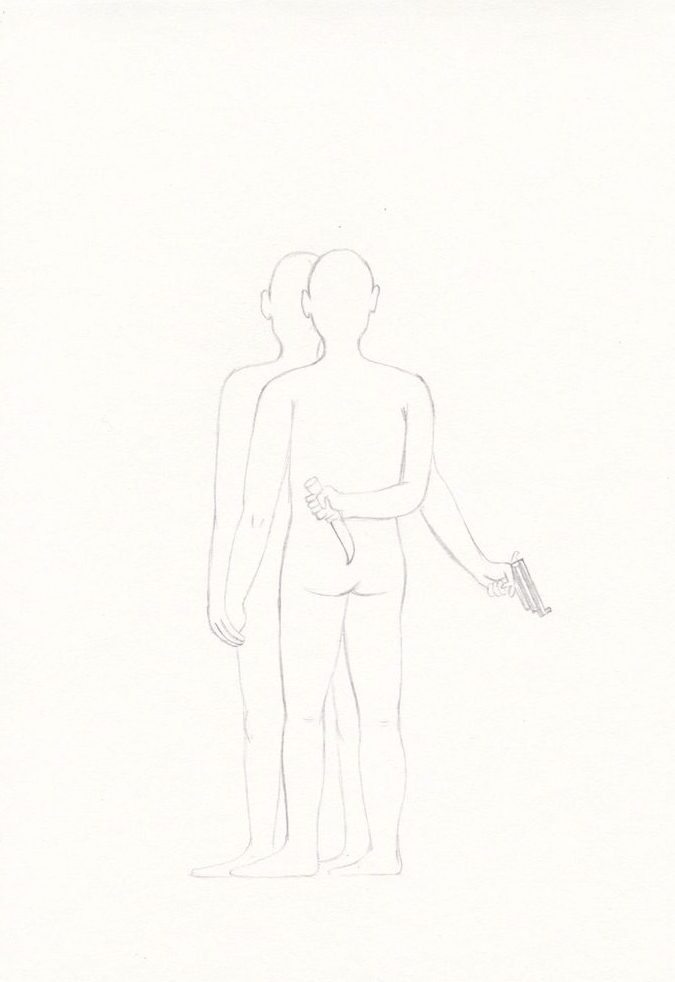

He Jian consistently uses paper as an important medium in his work, often applying the material to his surfaces in a similar way to how an artist applies paint to a canvas. His works are mostly created in different shades of black and white with the exception of a few sepia tones. Some of He Jian’s recent works carry many layers, creating depth onto a two-dimensional surface in the form of dense paper landscape collages.
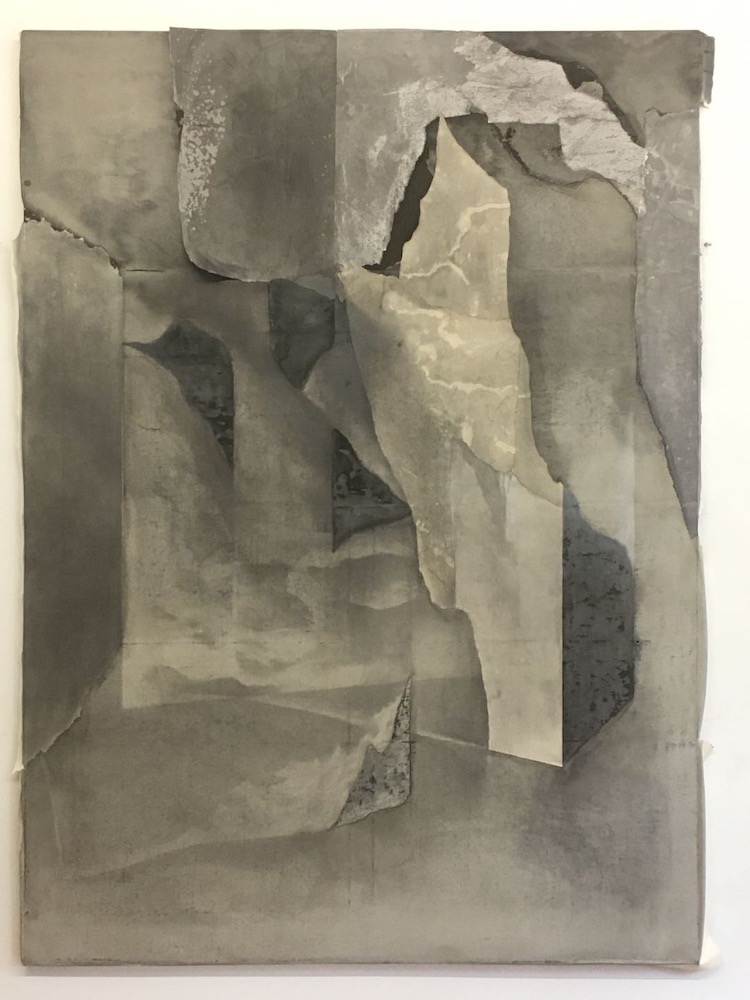
130 x 180 cm, © the artist
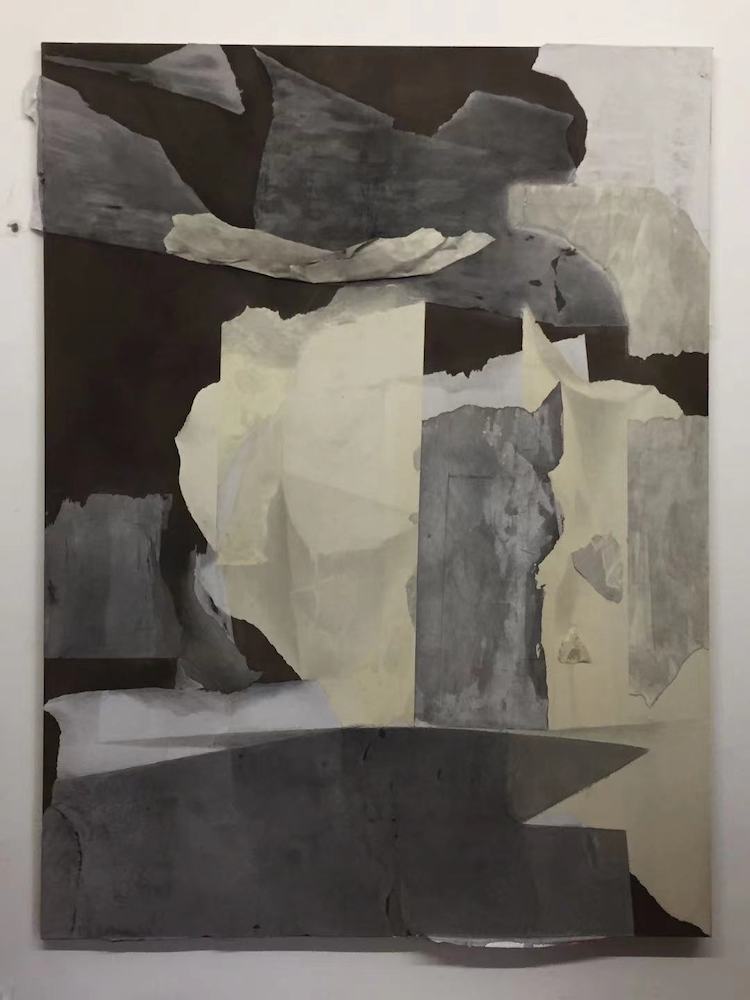
215 x 150 cm, © the artist
He Jian’s Use of Black and White
When I asked He Jian about his use of black and white, he explained that he made a conscious decision to reduce his color palette in order to emphasize the essence of things, as well as underline the element of space. In fact, his current work, the artist emphasized, is all about space. “The use of color draws the viewers’ attention towards the surface of things, whereas the use of black and white filters the image to a point where the viewer is able to see ‘behind the façade.’ This allows you to focus much more on the composition and spatial elements of the picture,” the artist clarifies. He compares this effect to black and white film. The lack of color enables a form of observation that is very different, and it is this form of observation that He Jian prefers after exposing himself to German culture while studying in Kassel.
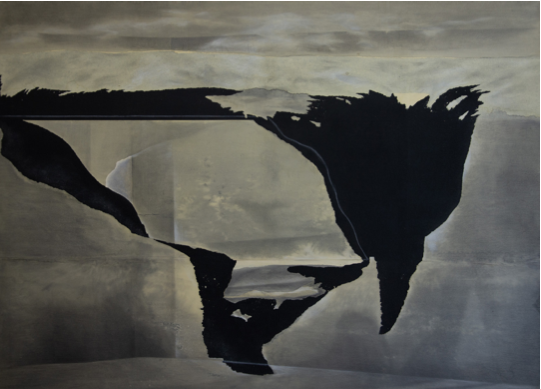
180 x 130 cm, © the artist
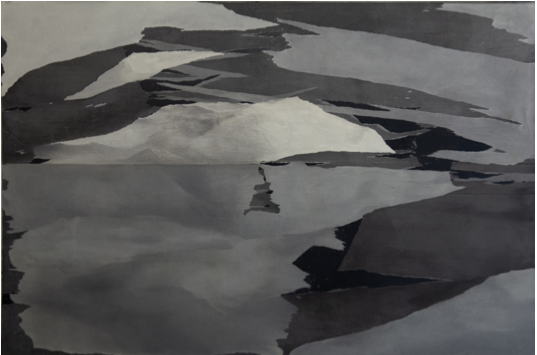
150 x 100 cm, © the artist
In a print of a drawing titled Schief/ wonky, the viewer is confronted with the image of a huge ship, veering sideways at a dangerous angle in the ocean. The ship is drawn in white contours against a dark background, resembling lines of chalk on a blackboard. He Jian’s intention is to raise questions and stimulate associations among the viewers—Is the ship about to capsize? What is its fate? The spectral image of a blindfolded figure within this drawing expresses our lack of knowledge and perhaps our helplessness towards whatever “fate” awaits us. He Jian does not believe in absolutes, however. There is always a sense of uncertainty he wishes to express, a gray zone that has not been determined. This is why the artist is interested in creating works that are neither fully abstract or figurative, neither drawing or painting, neither black or white, neither finished or unfinished. The image of the tilted ship creates tension. Its white contours make the image appear unfinished. At the same time, the black background fills the canvas with a night sky and opaque body of water, giving the impression of completion. The lopsided ship also represents a kind of battle between man and nature, contrasting the human and non-human.
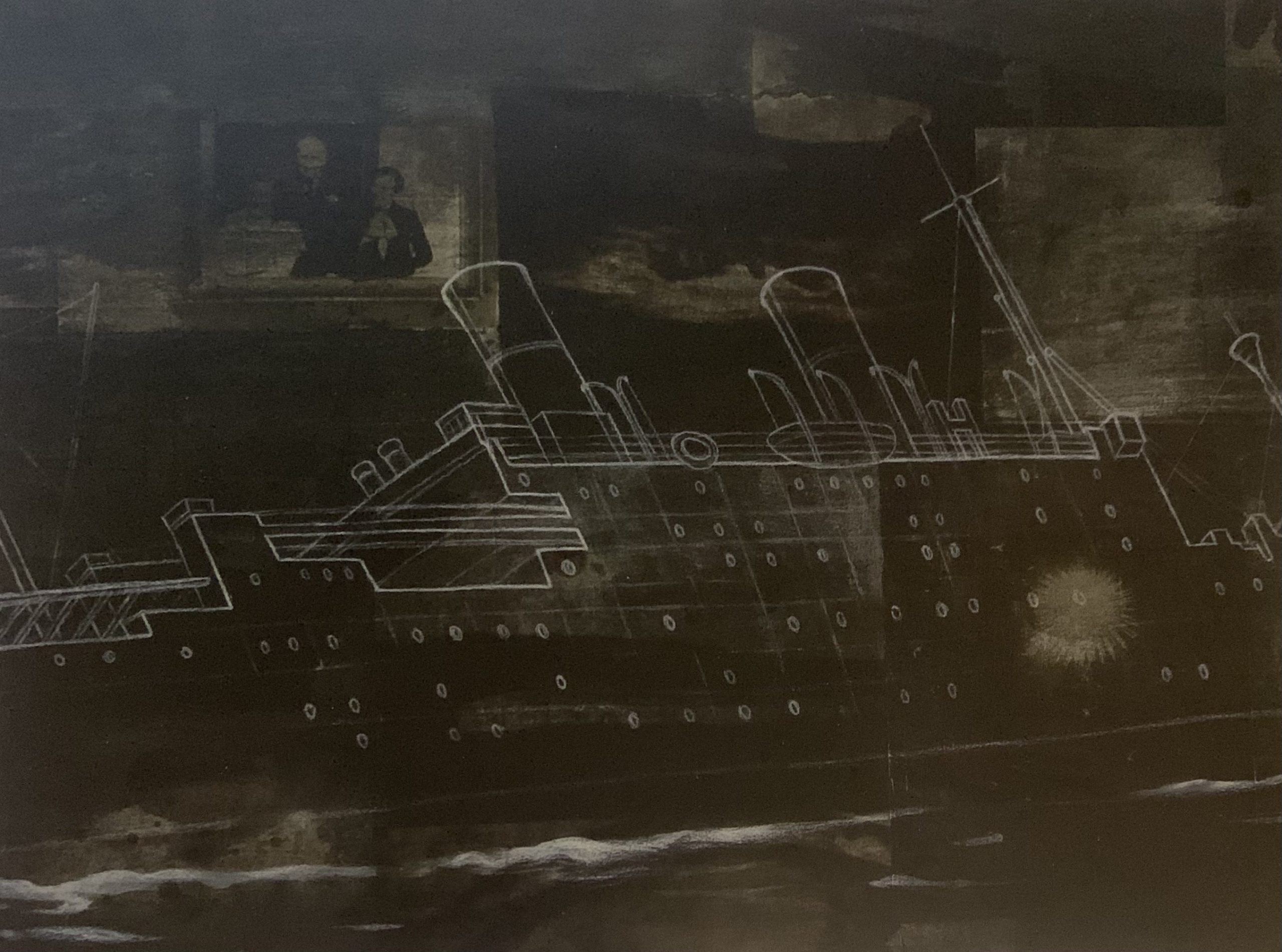
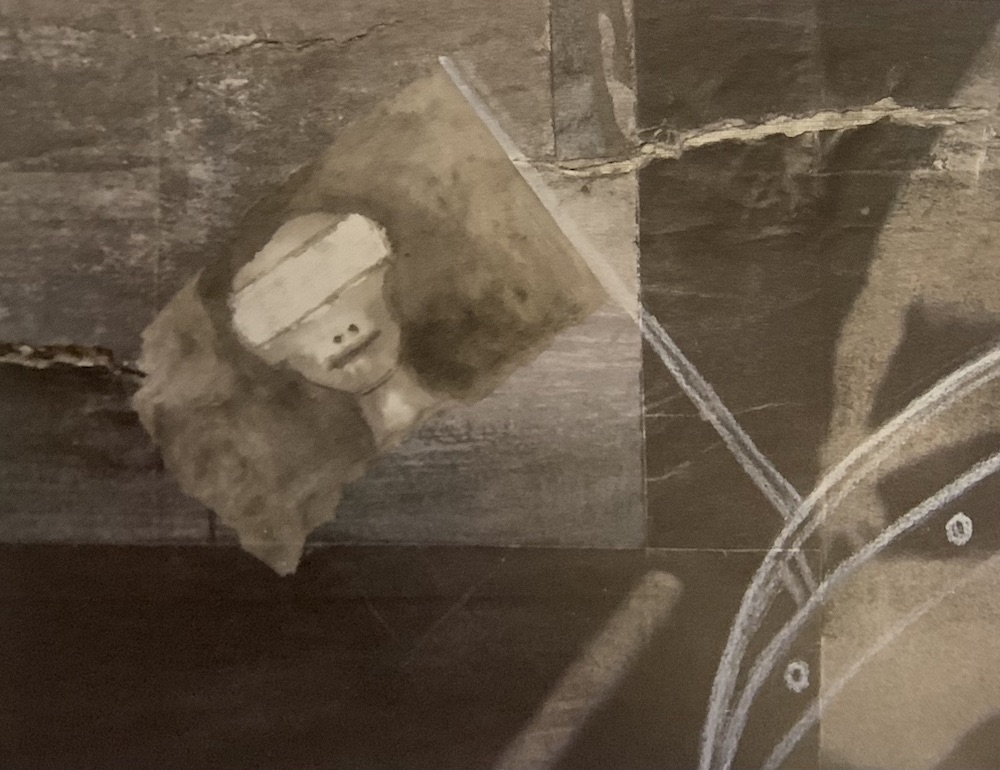
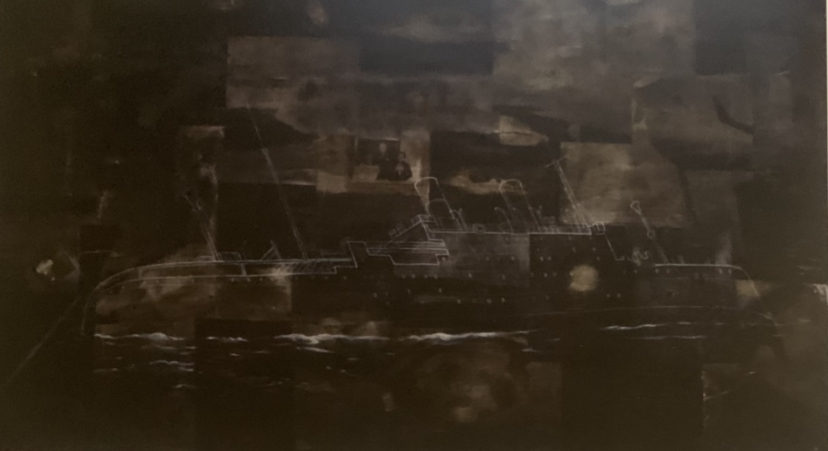
Fate vs. Free Will
He Jian delves much more deeply into the subject of fate in the work Landscape 1 which shows a carousel of headless animals moving in circles, seemingly without free will or purpose. “Like the animals in this scene, we may feel as though we are completely controlled by fate,” explains He Jian. He then points out a subtle detail within the work—a floating door in the middle of the canvas, opening to a staircase. This surreal element reminds the viewer that there is, in fact, a way out—a chance to escape the destiny embodied by the revolving carousel. Those who are too traditional will not see it, however, and miss out on the opportunity to take a different path.

He Jian’s Use of Paper
Similar to the image of the ship, He Jian expresses this tension between fate and free will through fine white contours on a pitch-black surface, but in addition, he also adds scraps of torn paper on top of the drawing, which is in line with the rest of his paper landscape collages. The imperfect uneven shapes of the paper scraps create a contrast to the perfectly circular carousel, creating an element of chance and chaos within a planned construct.
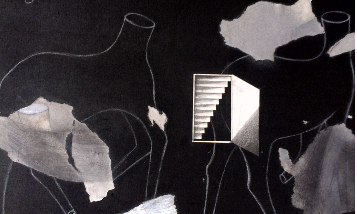
It is this interplay of contrasts and the creation of gray zones that express He Jian’s unique perspective as a traveler and intermediary between two worlds. An artist who has stepped out of his comfort zone, transitioned while abroad, then returned to his former comfort zone as a kind of translator of this experience. Because of the complexity of traveling to and from two different cultures, the artist creates visuals that seem to constantly teeter on an unstable edge—defying all ideas of absolutes and predetermined pathways. The artist embraces a world of chaos, in which, on the one hand, nothing is certain, yet on the other hand, there is always an opportunity for change.
Elements of Surrealism in He Jian’s Paper Landscape Collages
In He Jian’s ongoing series of paper landscape collages, some elements of surrealism, similar to those found among the image of the animal carousel, can still be found. For instance, the gray lines forming a door in Landscape 4. Reminiscent of a René Magritte painting, the artist creates the illusion of a cloudscape by layering wide strands of razor-thin paper on top of each other behind the faint outline of the door.
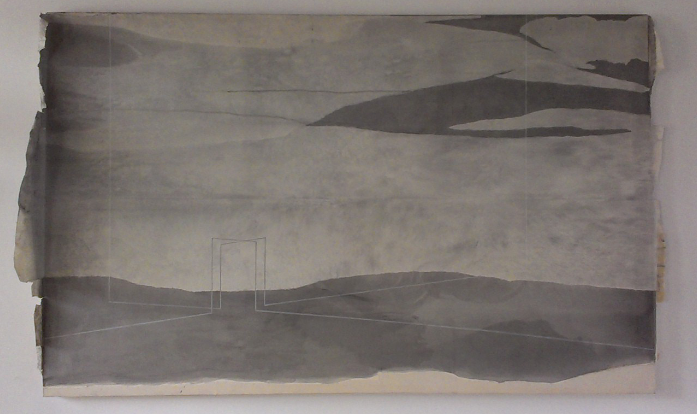
Other works within the paper landscape collage series are much more abstract, however, leaving it entirely up to the viewer to imagine mountains, clouds, bodies of water and cave-like spaces created by the different shades and layers of black and white paper.
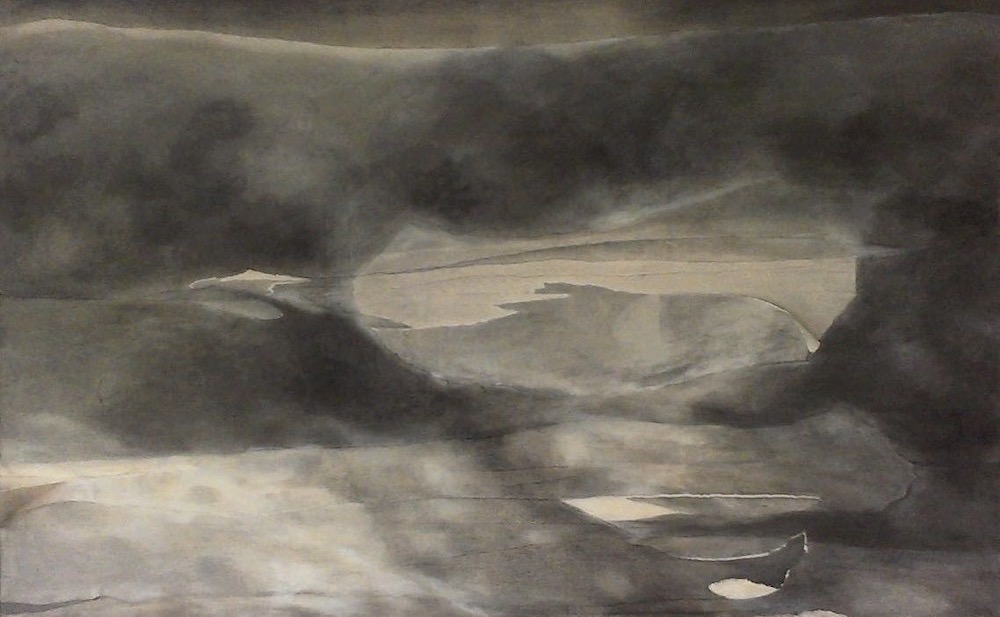
Landscape 5, 2016. Mixed Media, paper on canvas, 150 x 100 cm, © the artist
“Feihei” (飞黑) / “Flying Black” in Paper Landscape Collages
In the paper landscape collage series, the use of black and white once again plays a crucial role: Here, the application of white creates a solid object, something that does not allow you to pass through, whereas black represents the transparent, a passage through the structure embodied by the layers of light colored paper. He Jian points out that this is exactly the opposite of what in traditional Chinese ink painting is called “feibai (《飞白》),” which is literally translated as “flying white,” and is sometimes also referred to as “half-dry stroke.”
Feibai is a very particular ink technique, which is attributed to the famous calligrapher Cai Yong (蔡邕, 132 – 192) of the late Han dynasty (29 B.C. – 219 C.E.). It is created via a method of applying pressure to a half-dry ink brush, which causes the hair to separate, leaving streaks of white spaces when the ink is applied to the surface. The effect of these white spaces creates a sense of speed, vigor and spontaneity. In He Jian’s work, however, it is not the element of white that creates this effect—it is, in fact, the black element that creates a means for the eye to escape and for the imagination to wander. Like a mirror-image of the traditional Chinese calligraphy technique, one could refer to this as a form of “feihei” (《飞黑》) —”flying black”.
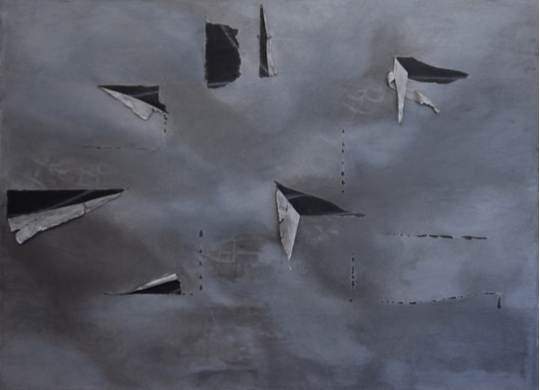
Landscape 11, 2020. Mixed Media, paper on canvas, 180 x 130 cm, © the artist
Eastern and Western Crossovers
As a traveler between Eastern and Western culture, He Jian alludes to Chinese traditional ink painting by reducing his palette to shades of black and white, much like the classical black and white aesthetics of calligraphy and landscape paintings created by scholars in the Song and Yuan Dynasties. To find out more about the significance of traditional Chinese ink, check out the previous China Artlover article Modern Chinese Calligraphy.
At the same time, He Jian alludes to Western aesthetics by applying both surreal and abstract elements in his work. His rendering of furniture within vague, open landscapes blurs the lines between the indoors and outdoors, much like the visuals used in surrealist painters Salvador Dalí and René Magritte. It is precisely this inner world, the “space within one’s mind,” that He Jian wishes to depict. In order to do so, he deconstructs the strict rules of the indoors we are so familiar with, such as walls, windows and doors by placing them in unknown semi-abstract environments.
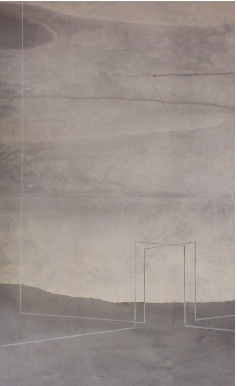
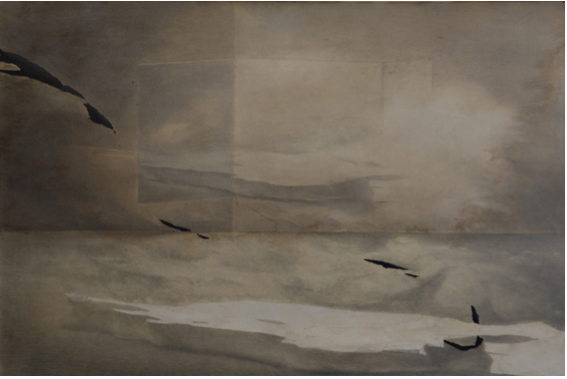
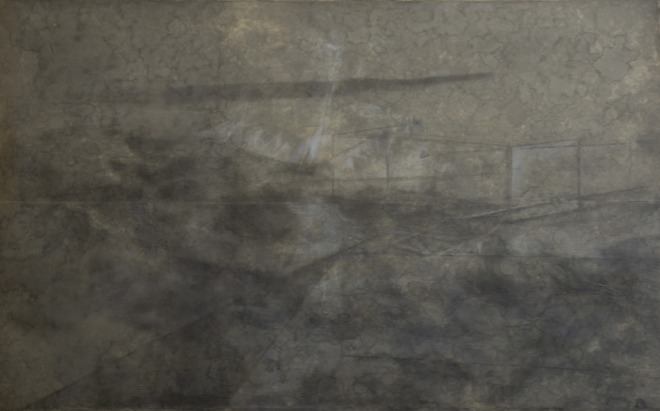
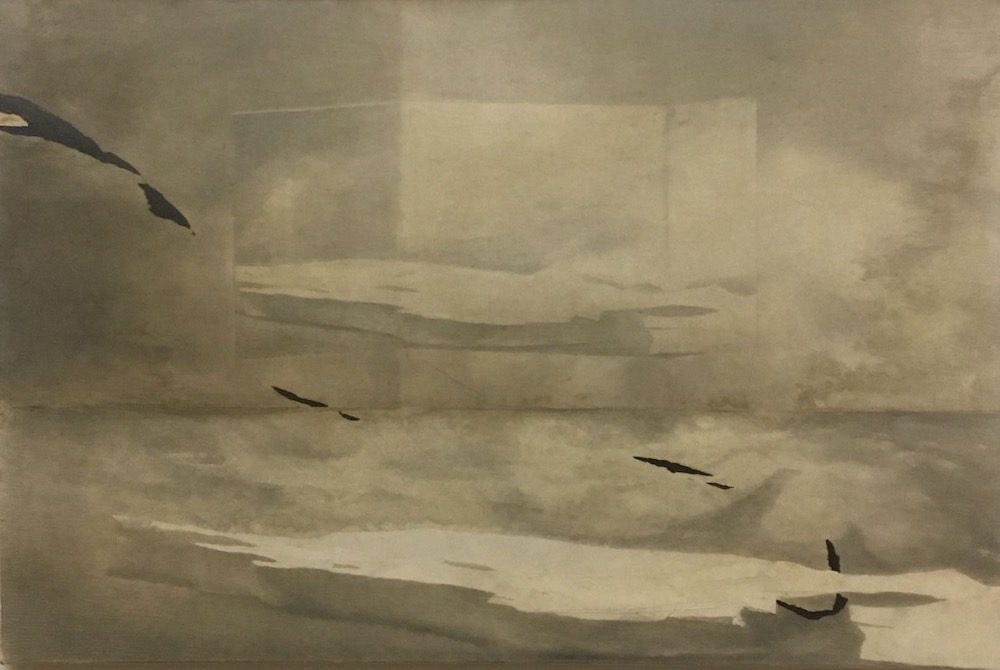

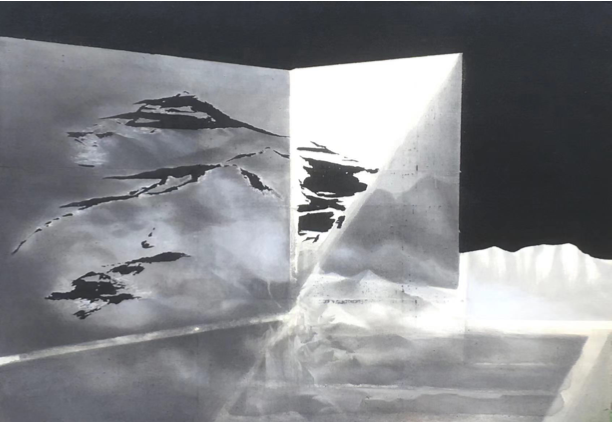
Another crossover with Western traditional painting can be seen in the artist’s frequent use of black, which dominates many classical European artworks, in particular Baroque paintings, where darkness becomes a dominating feature of the image. This technique is referred to as tenebrism or chiaroscuro, most commonly used by European masters such as Carravagio to create a sense of mystery.
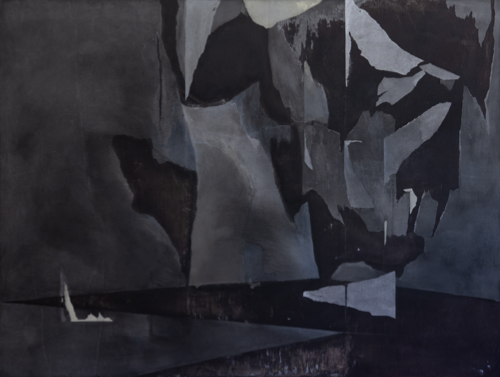
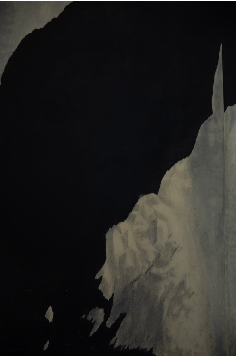
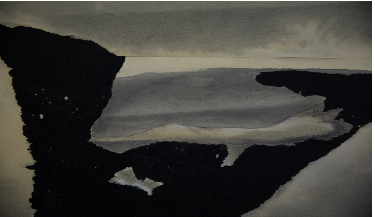
He Jian’s use of mixed media, however, stands out as a contemporary technique, which, nowadays, would neither be categorized as Eastern or Western, as it is present in all forms of international contemporary art.
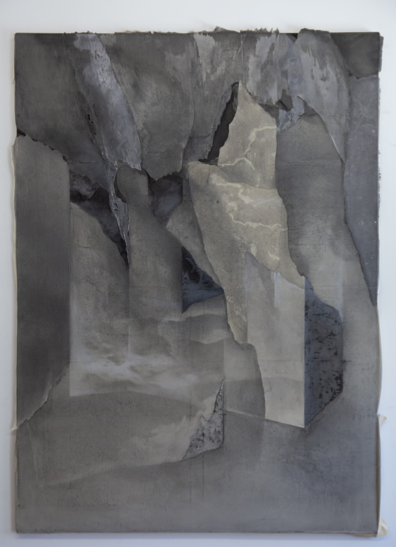
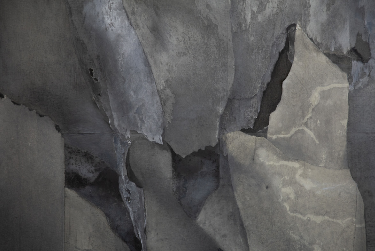
The artist’s unique perspective as a translator between East and West is both a strength and a challenge. Conveying such complexity can be perceived very differently depending on the type of audience—whether they are, for instance, Eastern or Western, and whether they have been exposed to a large amount of different art forms or not. Much like the technique of feibai, or, in this case, “feihei,” He Jian’s paper landscape collages can transport the viewer’s imagination to what lies beyond the obvious, triggering an emotional response from a curious mind. This does not mean that the viewer will necessarily comprehend the symbolic meaning as the artist might intend. Instead, the work can present an immediate experience or sense of what it tries to convey—and this is what is essential in creating impactful works of art.
Recent Exhibitions of Paper Landscape Collages
In 2018, Thomas Eller—the founder of Beijing Gallery Weekend—invited He Jian to take part in a group exhibition he curated on abstract art titled Abstract Art 11—Abstraction As Painterly Rhetoric. A Case Study Between Germany and China at Pifo Gallery 偏锋新艺术空间 in Beijing’s 798 District.
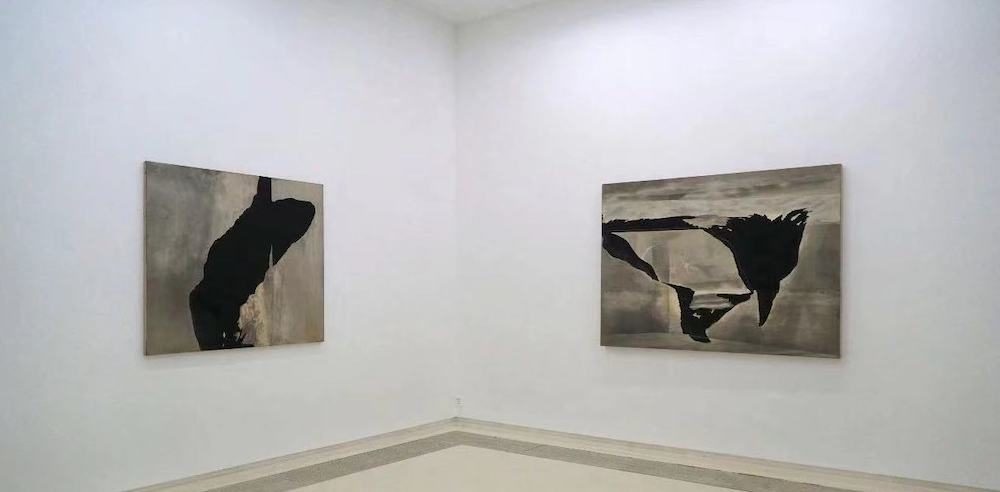
Two years later his work was exhibited at Sun Sun Gallery 三三画廊 in Tianjin’s art district, known as the Tianjin Third Cotton Mill (棉3创意街区 mian san chuangyi jiequ), also referred to as “Tianjin’s 798.” During the exhibition Early Style Art Project 早期风格, He Jian presented his most recent paper landscape collages, alongside other artists’ work, including Thomas Eller’s humorous addition of mounted photograph figurines depicting himself in the show.
The group exhibition, which was supported and sponsored by the German Embassy in China, aimed to provide a platform for young artists, and give value to their early explorations. To read He Jian’s thoughts on the meaning of “early style” in relation to an artist’s career, read Sun Sun Gallery’s article here.
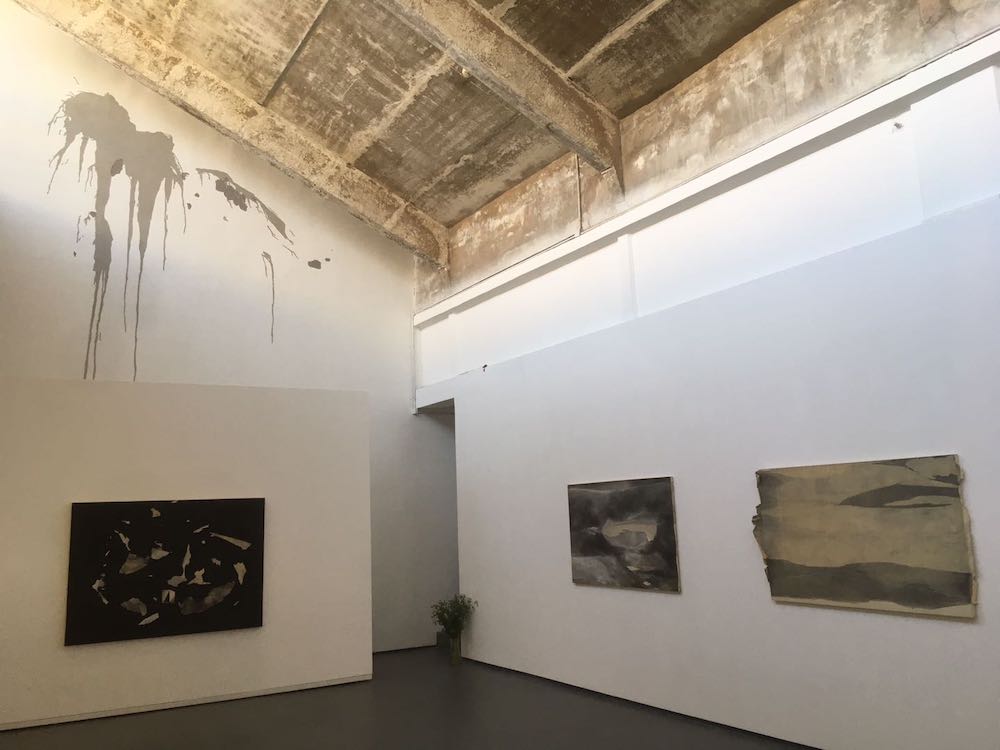
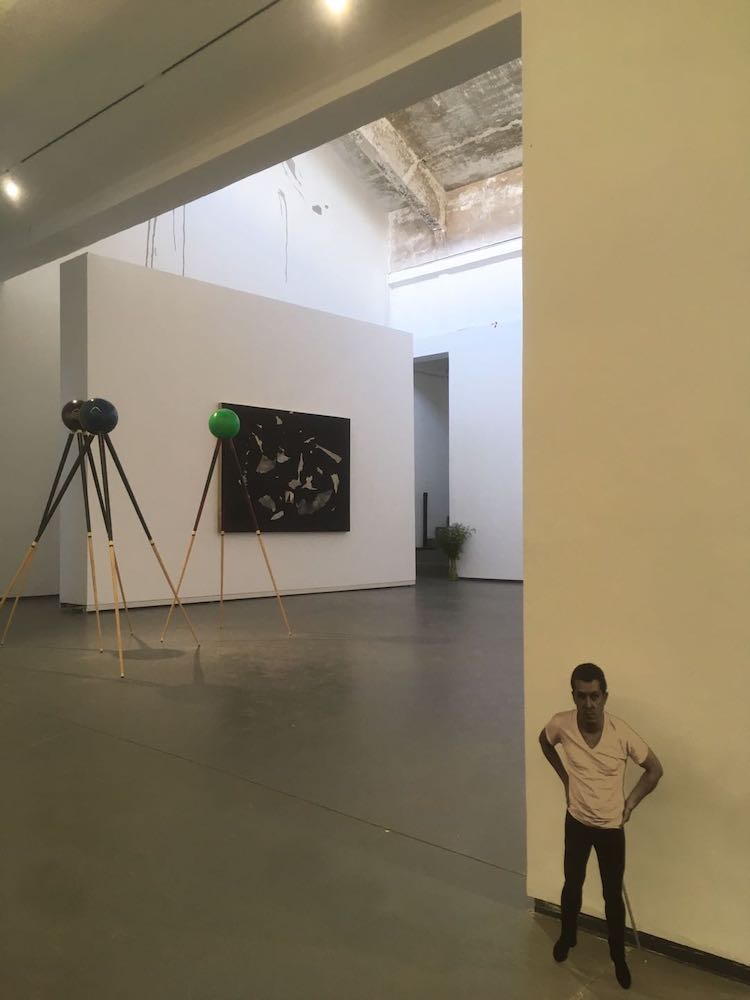
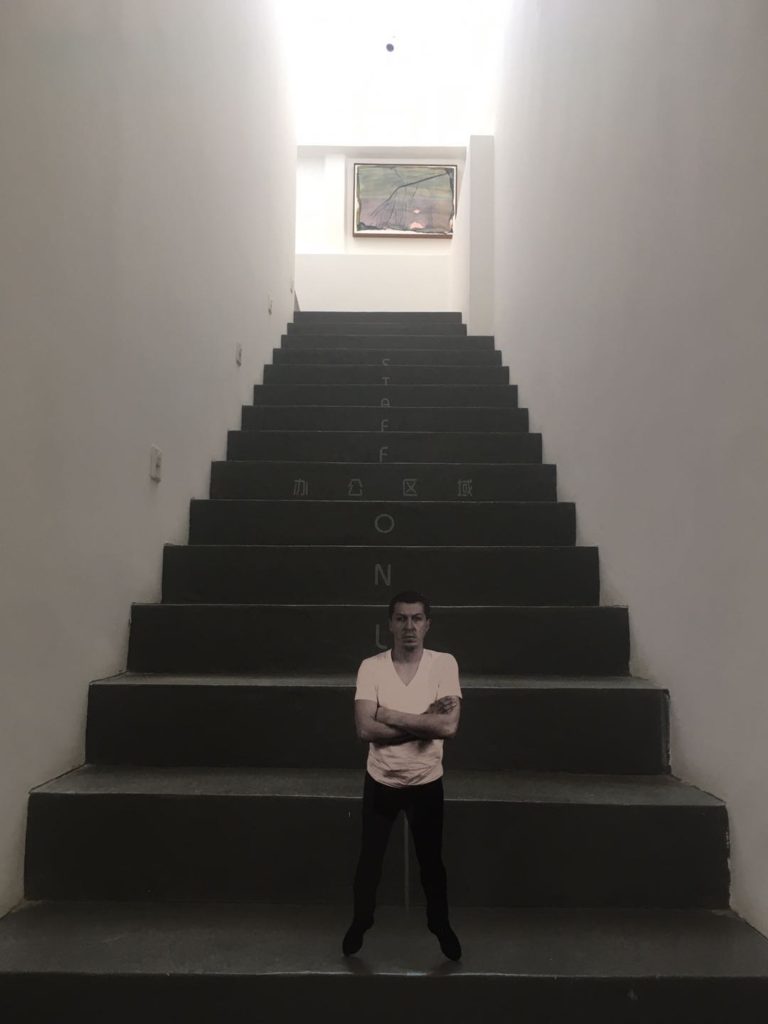
Be sure to keep an eye out on the artist’s future projects by following his stories on his Wechat account: renkerenjian0729
Or by emailing him for more information at: renkerenjian@qq.com
Like our story about Paper landscape collages from He Jian? Follow us on Facebook, Pinterest and Instagram.
Images Courtesy of the artist.
